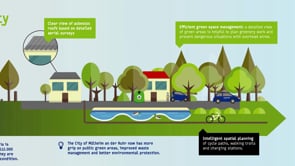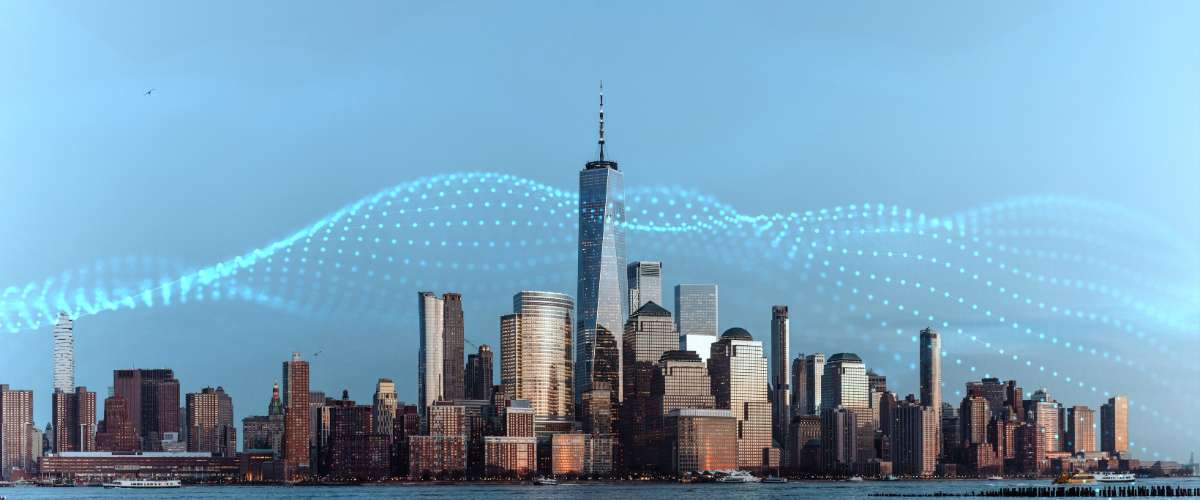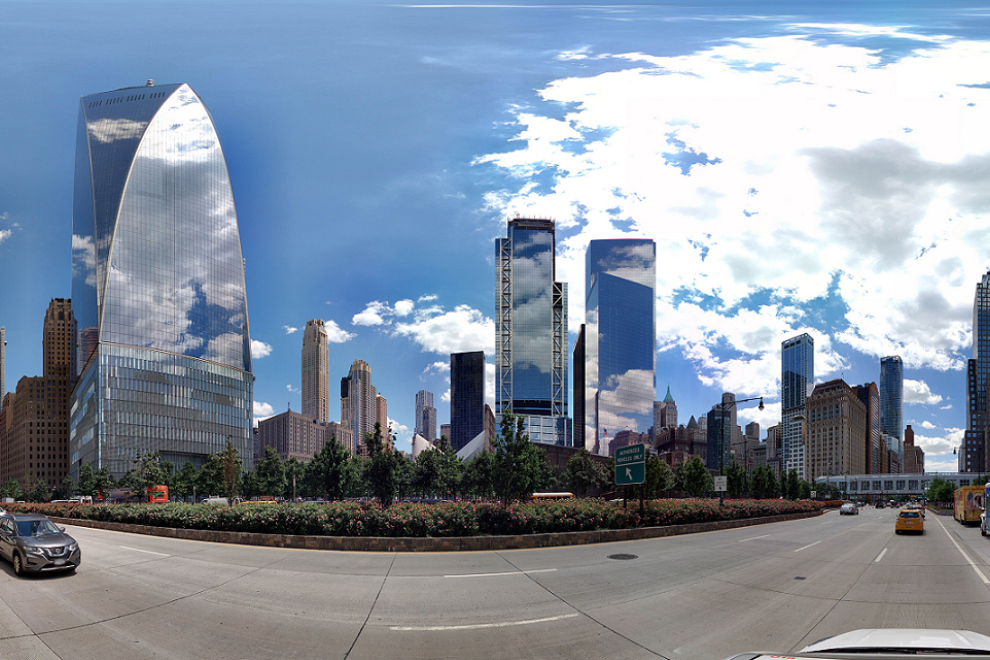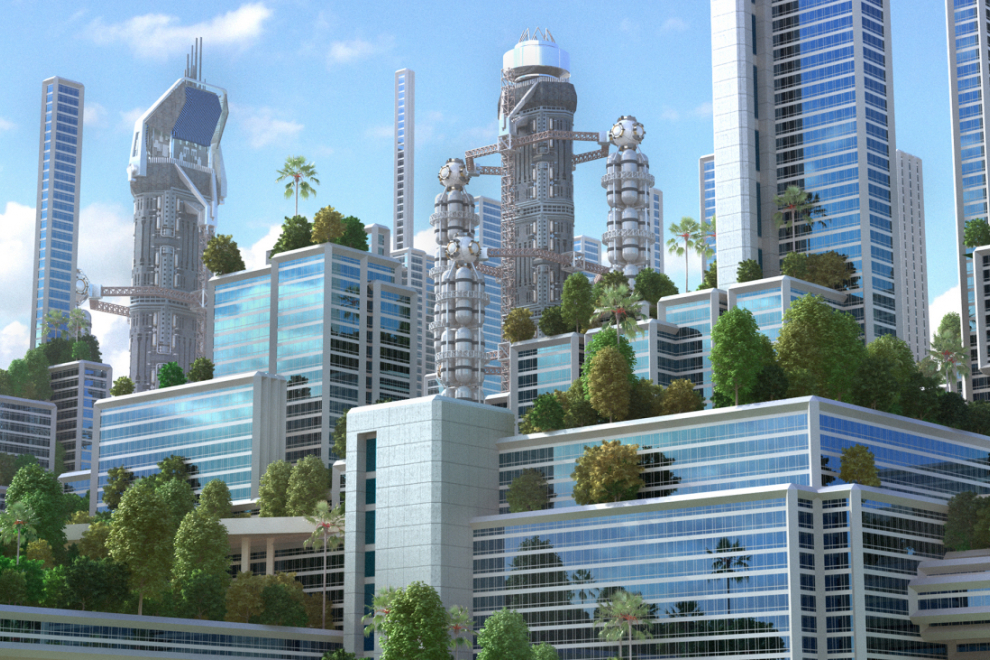Smart Cities
A 'Smart City' is an urban area that uses various digital technologies and data-driven solutions to enhance performance, well-being, reduce costs and resource consumption, and engage more effectively and actively with its citizens. Sustainability is a fundamental aspect of Smart Cities, and it plays a crucial role in their planning, development, and operation. Smart Cities aim to create urban environments that are not only technologically advanced but also environmentally responsible and sustainable. Cyclomedia contributes to the Smart City movement by offering geospatial imaging and data solutions that enable cities to make quick, data-driven decisions, which improve infrastructure management, enhance transportation and mobility, promote sustainability, and engage citizens.

The city of the future in 4 steps
What are the 4 main areas of focus that cities need to improve upon to become 'Smart Cities', and how can Cyclomedia help your city improve in each area?
Cyclomedia is committed to being a global leader in protecting our environment and enabling the long-term sustainability of our planet by actively monitoring our carbon footprint via direct and indirect emissions on a regional basis. We structure our goals, priorities, and achievements according to the 17 global sustainable development goals (SDGs) of the United Nations (UN). This UN framework provides substantive support for issues in science and technology, water, energy, climate, oceans, urbanization, and transport. Of these 17 goals, we have chosen the five most closely overlapping with the challenges Cyclomedia aims to solve:
- Decent work and economic growth
- Industry, innovation, and infrastructure
- Sustainable cities and communities
- Responsible consumption and production
- Climate action

At Cyclomedia, we aim to use our technology to help create a CO2-positive ecosystem. Our solutions are proactively engineered to bring the outside world to your desktop for remote planning, engineering, inspection, assessment, asset management and many other use cases. Our technology significantly reduces the number of physical field visits, resulting in less fuel being expended, less wear and tear on vehicles and equipment, less pollution, and ultimately a net reduction in carbon footprint.
It is nearly impossible to calculate the number of trips and travel mileage saved to and from offices which result from the virtual site work enabled by our platform. In many cases, a single use of our solutions in place of a field visit may save dozens of miles on local roads, to hundreds of miles for large counties or highway networks. During 2022, our customers viewed 95,499,241 images, with each view potentially saving significant travel miles and the concurrent CO2 emissions.
Want to know more?



